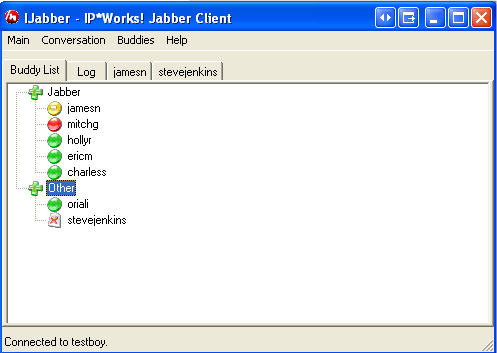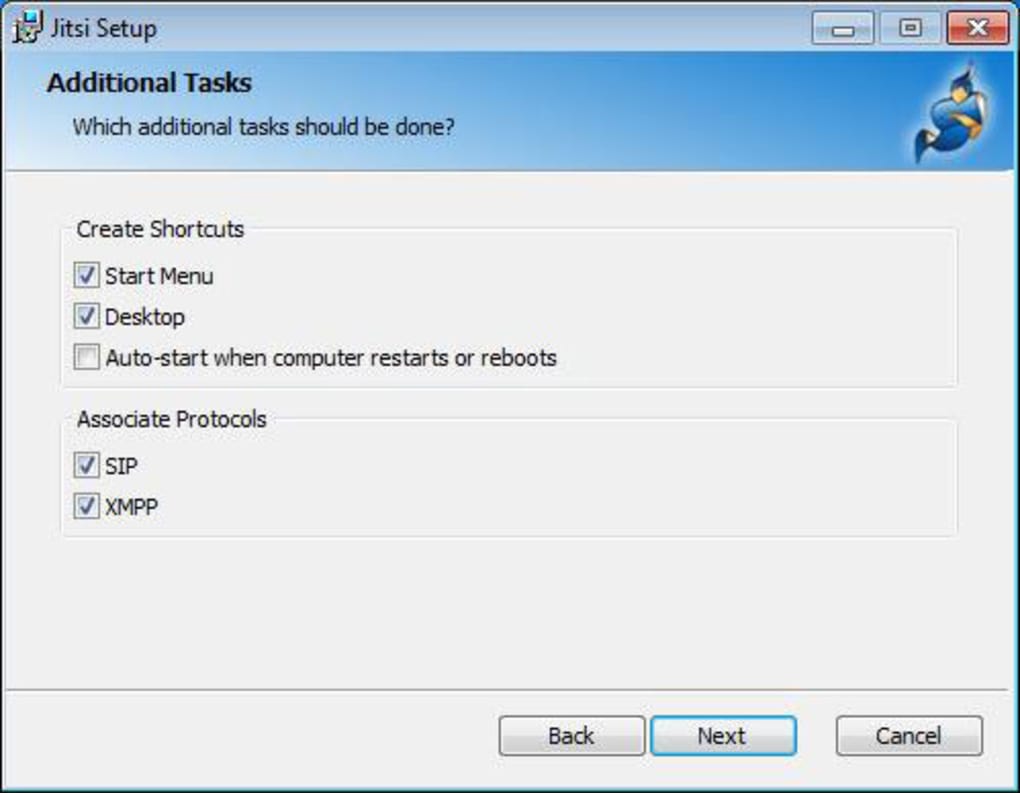

- #JABBER CLIENT DOWNLOAD JITSI AT HOW TO#
- #JABBER CLIENT DOWNLOAD JITSI AT INSTALL#
- #JABBER CLIENT DOWNLOAD JITSI AT FULL#
- #JABBER CLIENT DOWNLOAD JITSI AT SOFTWARE#

You should be able to add, delete, and change passwords for users via prosodyctl while it’s running once you have set this up. Now only the accounts you created on the Prosody server will be able to create new meetings. Then restart most things (Prosody at least, maybe parts of Jitsi too), I rebooted the VM. Then run commands like the following to create new users who can create rooms: prosodyctl register admin j. Then add the following section: VirtualHost "guest.j."Įdit /etc/jitsi/meet/j. and add the following line: anonymousdomain: 'guest.j.',Įdit /etc/jitsi/jicofo/sip-communicator.properties and add the following line: .URL=XMPP:j.
#JABBER CLIENT DOWNLOAD JITSI AT HOW TO#
The secure-domain document shows how to restrict access, but I’ll summarise the basics.Įdit /etc/prosody/conf.avail/j. and use the following line in the main VirtualHost section: authentication = "internal_hashed" This section describes how to restrict conference creation to authenticated users. There are optional features of Jitsi which require some of these names, but so far I’ve only used the basic functionality. Jitsi also appears to use the names “speakerstats.j. conferenceduration.j. lobby.j. conference.j. conference.j.” but they aren’t required for a basic setup, I guess you could add them to /etc/hosts to avoid the possibility of strange errors due to it not finding an internal host name. It seems that you need to have an /etc/hosts entry with the public IP address of your server and the names “j. j auth.j.”. Key = "/etc/letsencrypt/live/j./privkey.pem" Ĭertificate = "/etc/letsencrypt/live/j./fullchain.pem" Then you have to edit /etc/prosody/conf.d/j. to use the following ssl configuration: Ssl_certificate_key /etc/letsencrypt/live/j./privkey.pem Ssl_certificate /etc/letsencrypt/live/j./fullchain.pem
#JABBER CLIENT DOWNLOAD JITSI AT FULL#
If you get the nginx certificate wrong or don’t have the full chain then phone clients will abort connections for no apparent reason, it seems that you need to edit /etc/nginx/sites-enabled/j. to use the following ssl configuration: When apt installs jitsi-meet and it’s dependencies you get asked many questions for configuring things. usr/bin/letsencrypt certonly -standalone -d j.,auth.j. -m | gpg -dearmor > /etc/apt/jitsi-keyring.gpgĮcho "deb stable/" > /etc/apt//jitsi-stable.list It seems that you need them for j. and auth.j. People will type that every time they connect and will thank you for making it short. The first thing to do is to get a short DNS name like j.

They cover everything fairly well, but I’ll document the configuration I wanted (basic public server with password required to create a meeting).
#JABBER CLIENT DOWNLOAD JITSI AT INSTALL#
It wants to configure the Prosody Jabber server and a web server and my first attempt at an install failed when it tried to reconfigure the running instances of Prosody and Apache. This is great if you have a blank slate to start with, but if you already have one component installed and running then it can break things. It’s packages want to help you by dragging in other packages and configuring them. Jitsi is complex and has lots of inter-dependencies.

Here is an overview of how to set it up on Debian.įirstly create a new virtual machine to run it.
#JABBER CLIENT DOWNLOAD JITSI AT SOFTWARE#
I’ve just setup an instance of the Jitsi video-conference software for my local LUG.


 0 kommentar(er)
0 kommentar(er)
